Table of Contents
ToggleUnderstanding the Impact of Email Drip Campaigns
In home care marketing, staying in touch with potential clients is key to building trust and encouraging them to take action. One of the best ways to manage this ongoing communication is through an email drip campaign. This marketing approach involves sending automated emails based on your audience’s actions or specific timelines. By delivering the right message at the right time, you can nurture relationships, increase engagement, and ultimately grow your business.

According to Salesforce, “Drip marketing takes a more personalized, gradual approach, providing relevant content at specific intervals. This helps in turning leads into sales and building customer relationships that last.” This structured approach allows you to connect with your audience meaningfully over time.
Knowing Your Audience: The Key to Successful Drip Campaigns
Before setting up an email drip campaign, it’s important to understand your audience. Effective home care marketing starts with audience segmentation, where you divide your audience into smaller groups based on factors like behavior, demographics, and their interactions with your brand. For example, you might segment your audience based on whether they are looking for elderly care, disability support, or post-surgery assistance.
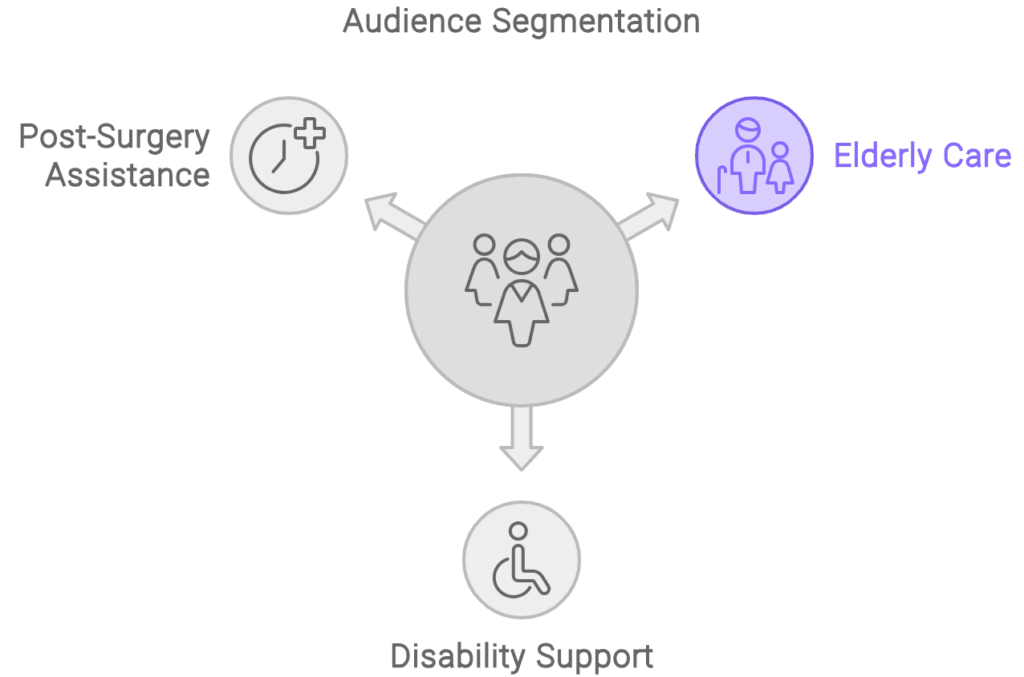
Creating detailed buyer personas helps you tailor your drip campaigns to meet the specific needs of each segment. By understanding what drives each group, you can craft messages that resonate and encourage them to take action.
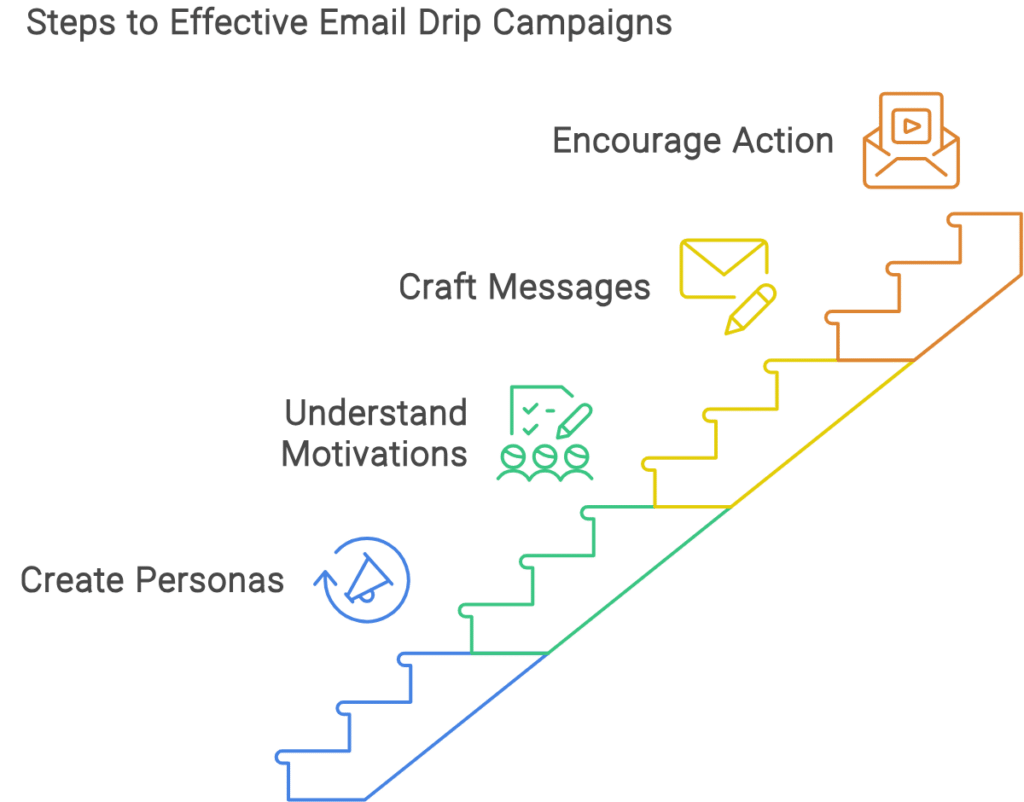
As Salesforce notes, “The key advantage of drip marketing lies in its ability to deliver relevant information at specific stages of the customer journey, making it a powerful tool for driving conversions”.
Different Types of Email Drip Campaigns for Home Care
Various situations call for different types of drip campaigns. Here are some effective ones you can use in home care marketing:
- Onboarding Drip Campaigns: When someone shows interest in your services, onboarding emails are your chance to make a strong first impression. These emails can introduce your company, highlight key services, and guide potential clients through their initial steps with your brand.

- Lead Nurturing Drip Campaigns: Not all leads are ready to make a decision right away. Lead nurturing campaigns help keep your brand in front of potential clients by providing valuable information over time. For example, you can send educational content about the benefits of professional home care or offer tips on choosing the right service provider.

- Retargeting and Re-engagement Drip Campaigns: Sometimes, potential clients may lose interest or get distracted. Retargeting emails can bring them back by reminding them of your services or offering special incentives. Re-engagement campaigns are also useful for reconnecting with past clients who haven’t interacted with your emails in a while.
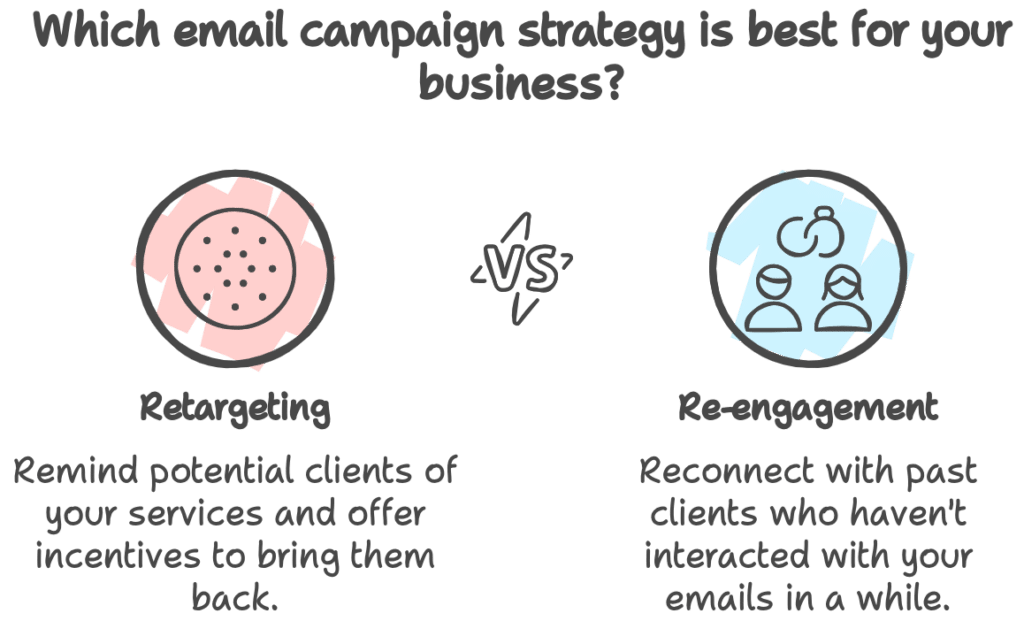
- Post-Purchase Drip Campaigns: After a client signs up for your services, keeping the relationship strong is important. Post-purchase campaigns can include thank-you emails, feedback requests, and recommendations for additional services that might be helpful.

Brevo emphasizes the effectiveness of such campaigns, noting that “Drip campaigns allow you to build a coherent and engaging narrative, which leads are more likely to respond to, converting them into customers with a structured, thoughtful plan”
How to Set Up an Effective Drip Campaign
Creating a successful email drip campaign starts with setting clear goals. What do you want to achieve? Whether it’s converting leads, increasing engagement, or boosting repeat business, your goals will guide your campaign’s structure.
Next, focus on crafting high-impact content. Your subject lines should grab attention, and your email body should be engaging and easy to read. Consider using a mix of text, images, and videos to keep your audience interested. In home care marketing, sharing client testimonials or success stories can be particularly effective.
Automation tools are key to managing drip campaigns. Platforms like ASNSpark! CRM, Mailchimp, HubSpot, or Adobe’s marketing tools can help you set up and monitor your campaigns. These tools allow you to schedule emails, track performance, and make adjustments based on real-time data.

As Salesforce points out, “Ongoing analysis helps you refine your strategy, improving the relevance and effectiveness of your drip marketing emails”
Testing and optimization are critical to ensuring your campaign’s success. A/B testing different subject lines, email formats, or sending times can provide insights into what works best for your audience. Regularly reviewing your campaign’s performance metrics will help you fine-tune your strategy and get the best results.
Advanced Strategies for Maximizing Drip Campaign Success
To get the most out of your email drip campaign, consider incorporating advanced strategies like behavioral triggers and dynamic content. Behavioral triggers send emails based on specific actions taken by your audience, such as signing up for a newsletter or clicking on a link. This allows for highly personalized communication that feels timely and relevant.

Dynamic content takes personalization further by adjusting the email content based on the recipient’s preferences or behaviors. For example, if a potential client has shown interest in Alzheimer’s care, your email can automatically include information about those services.
Multi-channel drip campaigns, which integrate email with other marketing channels like SMS or social media, can also enhance your results. This approach ensures that your message reaches your audience through multiple touchpoints, increasing the chances of engagement.
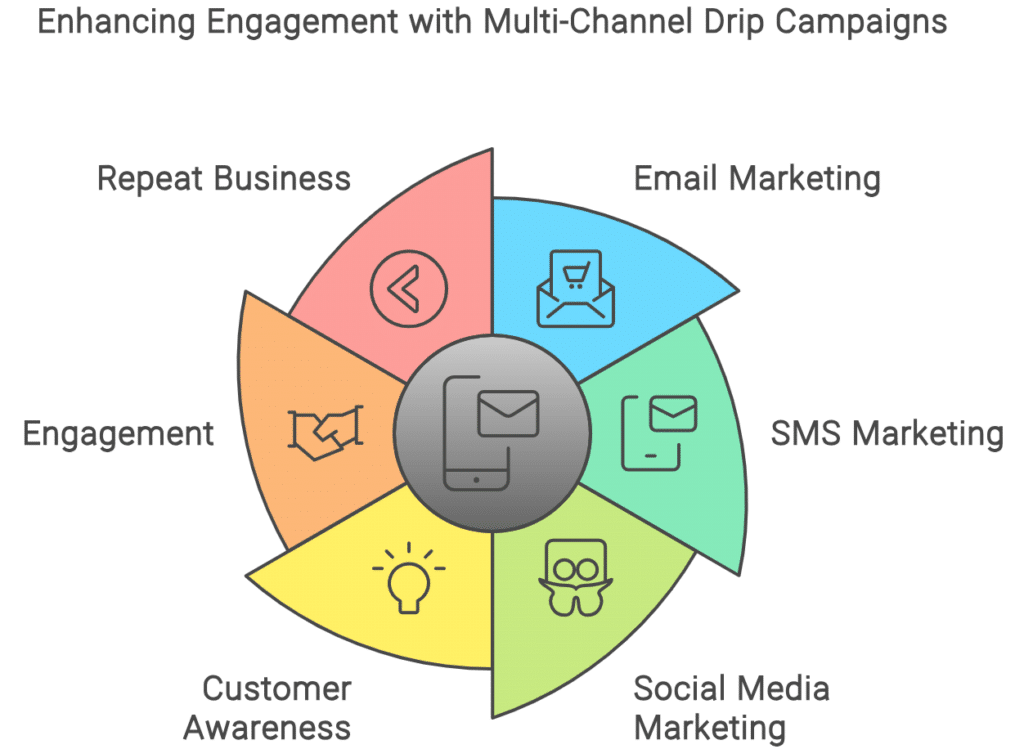
Finally, consider how your drip campaigns fit into the overall customer lifecycle. From raising awareness to encouraging repeat business, each stage of the customer journey offers opportunities to connect with your audience and build lasting relationships.
As The Email Marketers explain, “Drip campaigns deliver content in a sequenced manner, helping build interest and engagement over time, which inspires a meaningful and lasting relationship with the audience”
Email Drip Marketing Starter Template
Let’s look at a few real-world examples to see these strategies in action: Short and easy to read.

Every 3 Days, Send a New "Drip" Email

These examples show that with the right approach, drip campaigns can make a significant impact on your marketing efforts.
Best Practices and Pitfalls to Avoid
To ensure your drip campaigns are effective, follow these best practices:
- Keep it personal: Use your audience’s name and customize content based on their interests.
- Don’t overwhelm: Space out your emails to avoid overwhelming your audience.
- Test and refine: Regularly test different elements of your campaign to see what works best.
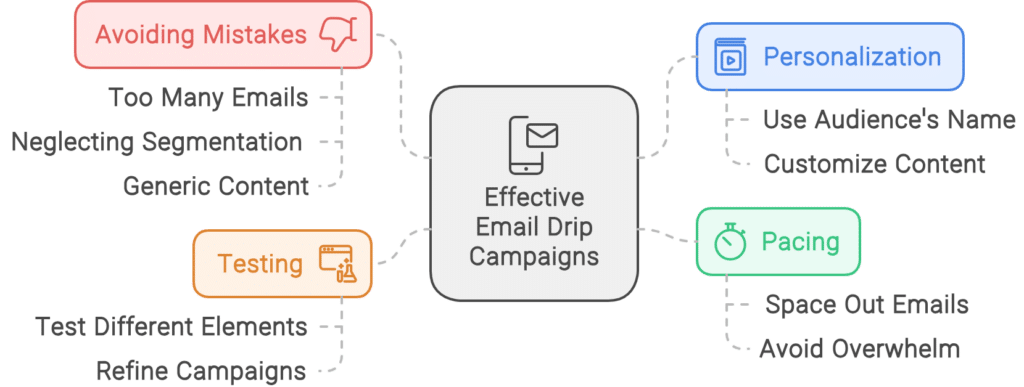
Avoid common mistakes like sending too many emails, neglecting to segment your audience, or using generic content that doesn’t resonate with your readers.
Building Success with Drip Campaigns
Email drip campaigns are a powerful tool in home care marketing. By understanding your audience, tailoring your content, and using advanced strategies, you can create campaigns that build trust, drive engagement, and grow your business.
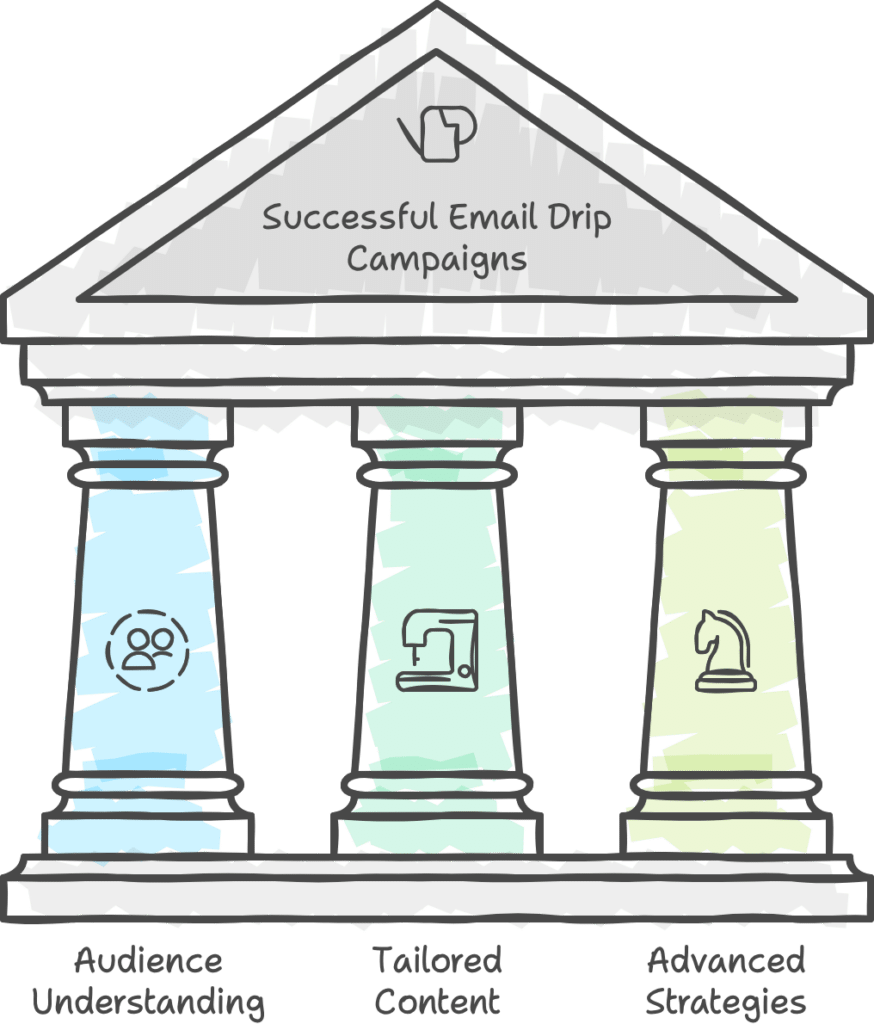
As Salesforce notes, “Drip marketing delivers a sequence of targeted, personalized messages to prospects or customers over time. With it, you build and maintain relationships, and adapt content based on individual responses”. With continuous learning and optimization, your drip campaigns will not only meet but exceed your marketing goals.
Frequently Asked Questions About Home Care Marketing with Drip Campaigns
The success of an email drip campaign is typically measured by tracking key metrics such as open rates, click-through rates, conversion rates, and overall engagement. These metrics help determine how well your emails are performing in terms of capturing interest, encouraging action, and ultimately converting leads into customers. Additionally, tracking metrics like unsubscribe rates and bounce rates can provide insights into areas for improvement.
Writing effective subject lines for a drip campaign involves keeping them short, clear, and compelling. Use action-oriented language and personalization, such as including the recipient’s name, to grab attention. It’s also important to convey the value of the email’s content right in the subject line. A/B testing different subject lines can help identify what resonates best with your audience.
Personalizing email drip campaigns for different customer segments can be achieved by tailoring the content based on factors like the recipient’s demographics, behavior, and previous interactions with your brand. This could involve using dynamic content blocks that change depending on the segment or creating entirely separate drip sequences for different segments. Personalized emails tend to have higher engagement rates as they speak directly to the recipient’s needs and interests.
Handling unsubscribes in a drip campaign involves ensuring that the process is simple and straightforward for the recipient. You should include a clear unsubscribe link in every email and respect the user’s choice promptly. Additionally, you can offer options for the subscriber to adjust their email preferences instead of unsubscribing entirely, which might help retain some engagement.
Email drip campaigns can be integrated with other marketing channels by coordinating your messaging across platforms like social media, SMS, and direct mail. For instance, you can use email to reinforce messages sent via SMS or social media or follow up on actions taken on these platforms. This multi-channel approach ensures consistent communication and can help amplify your marketing efforts.
Common mistakes to avoid when setting up an email drip campaign include not segmenting your audience, sending too many or too few emails, and using generic, impersonal content. Additionally, failing to monitor and adjust your campaign based on performance data can lead to missed opportunities for optimization. It’s important to regularly review your campaign metrics and make necessary tweaks to improve effectiveness.
Valerie VanBooven RN, BSN founded the company after years of working in many different roles from ICU Nurse to Discharge Planner, Home Care, Care Management and more. She wrote her first book in 2003, called “Aging Answers”. After that came “The Senior Solution” in 2009.
Valerie and her staff grew as more home care agencies and senior service businesses realized the undeniable value of being found online.
- Best Home Care Website Design Agencies in 2025 - March 13, 2025
- Home Care Marketing Ideas: The Best Ways to Market Your Home Care Business - September 22, 2024
- Home Care SEO: Strategies for Home Care Website Search Engine Optimization - September 21, 2024


